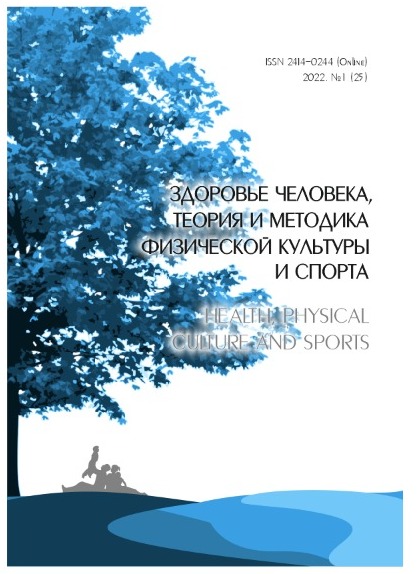Complex preventive functional programs for children with undifferentiated connective tissue dyplasia (hereditary disorders of connective tissue) at the stage of early detection of faulty postur
Abstract
The relevance of the topic is due to the prevalence, systemic nature of lesions, involvement in the pathological process of many structures of the body, systems, including the osteoarticular apparatus, and further development of a number of complications.Purpose of the study. Creation and implementation in practical healthcare of complex programs for patients with hereditary connective tissue disorders at the stage of early detection of faulty posture. Material and methods. Under observation were 60 patients with the syndrome of undifferentiated connective tissue dysplasia (hereditary connective tissue disorders) — 30 patients made up the main group, the same number, the comparison group. The study included 30 healthy children (control group) who sought medical help in the trauma department with minor soft tissue damage. The results of the study in the main group five years after the start of complex preventive programs revealed an increase in the endurance of the back muscles, a minimum number of manifestations of arthritis, arthralgic syndromes, and coccygodynia. Ten years later, by the age of 14, there was a good posture, a developed muscular corset, a minimum number of complications — Schuerman-Mau disease, scoliotic deformity of the thoracic spine, early juvenile osteochondrosis.
Downloads
References
Гулиева З.С , Герасимов А.М. Недифференцированная дисплазия соединительной ткани как фактор риска развития невынашивания беременности в ранние сроки // Вестник Ивановской медицинской академии. 2013. № 2. С. 39–41.
Демин В.Ф. Значение соединительнотканных дисплазий в патологии детского возраста // Вопросы современной педиатрии. 2005. Т4, № 1. С. 45–55.
Земцовский Э.В. Диагностика и лечение дисплазии соединительной ткани // Медицинский вестник. 2006. № 11 (354). С. 12.
Кадурина Т.И., Аббакумова Л.Н. Дисплазия соединительной ткани: путь к диагнозу // Вестник Ивановской медицинской академии. 2014. № 3. С. 5–11.
Кадурина Т.И., Горбунова В.Н. Дисплазия соединительной ткани. СПб., 2009. 713 с.
Казанбаева А.В., Легостина В.А., Ганеева Е.Р. Дисплазия соединительной ткани // Международный студенческий научный вестник. 2018. № 4. С. 3.
Серкова В.К., Осовская Н.Ю. Внекардиальные проявления дисплазии соединительной ткани у больных с пролабированием митрального клапана // Украинский кардиологический журнал. 2007. № 4. С. 70–75.
Стародубцева М.С. Состояние кардиодинамики у детей с малыми аномалиями развития сердца // Вестник РГМУ. 2005. № 3 (42). С. 130–135.
Струков А.И., Серов В.В. Системные заболевания соединительной ткани // Патологическая анатомия. М., 1993. С. 300–310.
Торшин И.Ю., Громова О.А. Дисплазия соединительной ткани, клеточная биология и молекулярные механизмы воздействия магния // Русский медицинский журнал: избранные лекции для семейных врачей. 2008. Т. 16, № 4. С. 7.
Щеплягина Л.А., Моисеева Т.Ю., Коваленко М.В. и др. Эпидемиология остеопороза у детей и подростков // Остеопения у детей. Диагностика, профилактика и коррекция. М., 2005. С. 10–12.
Copyright (c) 2022 Health, physical culture and sports

This work is licensed under a Creative Commons Attribution-NonCommercial 4.0 International License.
An author should not normally publish manuscripts describing essentially the same research in multiple journals or publication venues. Such redundant publication is generally considered to constitute unethical publishing behavior, and if discovered may result in a manuscript under consideration being rejected, or a published article being retracted.
Authors of manuscripts reporting on original research should present an accurate account of the work performed, accompanied by an objective discussion of its significance. Underlying data should be represented accurately in the manuscript. The manuscript should contain sufficient detail and references to permit others to replicate the work. The fabrication of results and the making of fraudulent or knowingly inaccurate statements constitute unethical behavior and may be cause for rejection or retraction of a manuscript or published article.





